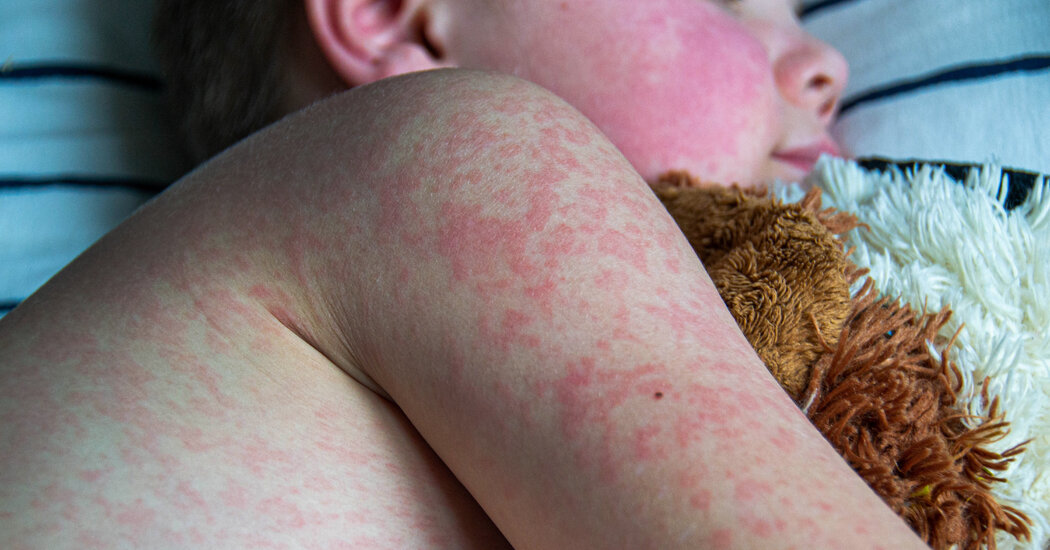There are several factors driving the spread of the highly infectious virus, experts said.
There have now been 64 measles cases in the United States this year, surpassing the total of 58 cases in all of 2023, according to new data from the Centers for Disease Control and Prevention.
The rise in cases should “alert us, rather than alarm us,” said Dr. Demetre Daskalakis, director of the National Center for Immunization and Respiratory Diseases at the C.D.C. Most communities across the country have vaccination rates high enough to have robust protection against the highly contagious virus, he said. Even after the increase, the number of cases is still significantly lower than it was in 2019, when more than 1,200 people were infected, more than two-thirds of whom were children.
But health experts said the milestone is a distressing reminder that even though there is an effective vaccine against the virus, measles remains a persistent threat to public health.
What’s driving the spread of measles
Doctors say there are several factors contributing to the spread of measles, cases of which have climbed across the globe in recent years. Many cases reported in the United States this year were linked to international travel, according to the C.D.C., as travel destinations such as Britain, Austria and the Philippines have had outbreaks. Many of the people in the United States who have been infected have been unvaccinated children age 12 months and older.
Routine childhood vaccinations, including the two-dose vaccine that protects against measles, mumps and rubella, stalled once the pandemic started. At the same time, vaccine hesitancy has become more commonplace, said Dr. Paul Offit, a vaccine expert at the Children’s Hospital of Philadelphia. Generally, a community is protected against measles if more than 95 percent of people in it are vaccinated. But state-required vaccinations among kindergartners in the United States fell from around 95 percent in the 2019-20 school year to roughly 93 percent in the 2022-23 school year.
That gap in vaccination has left about 250,000 kindergartners vulnerable to measles annually for the past three years, according to the C.D.C. The rate of vaccine exemptions for children has also increased, underscoring the challenges vaccine hesitancy presents.
